A test charge q0 is moved without acceleration from A to C over the path ABC as shown in Fig.
Calcualate potential difference beetween A and C.
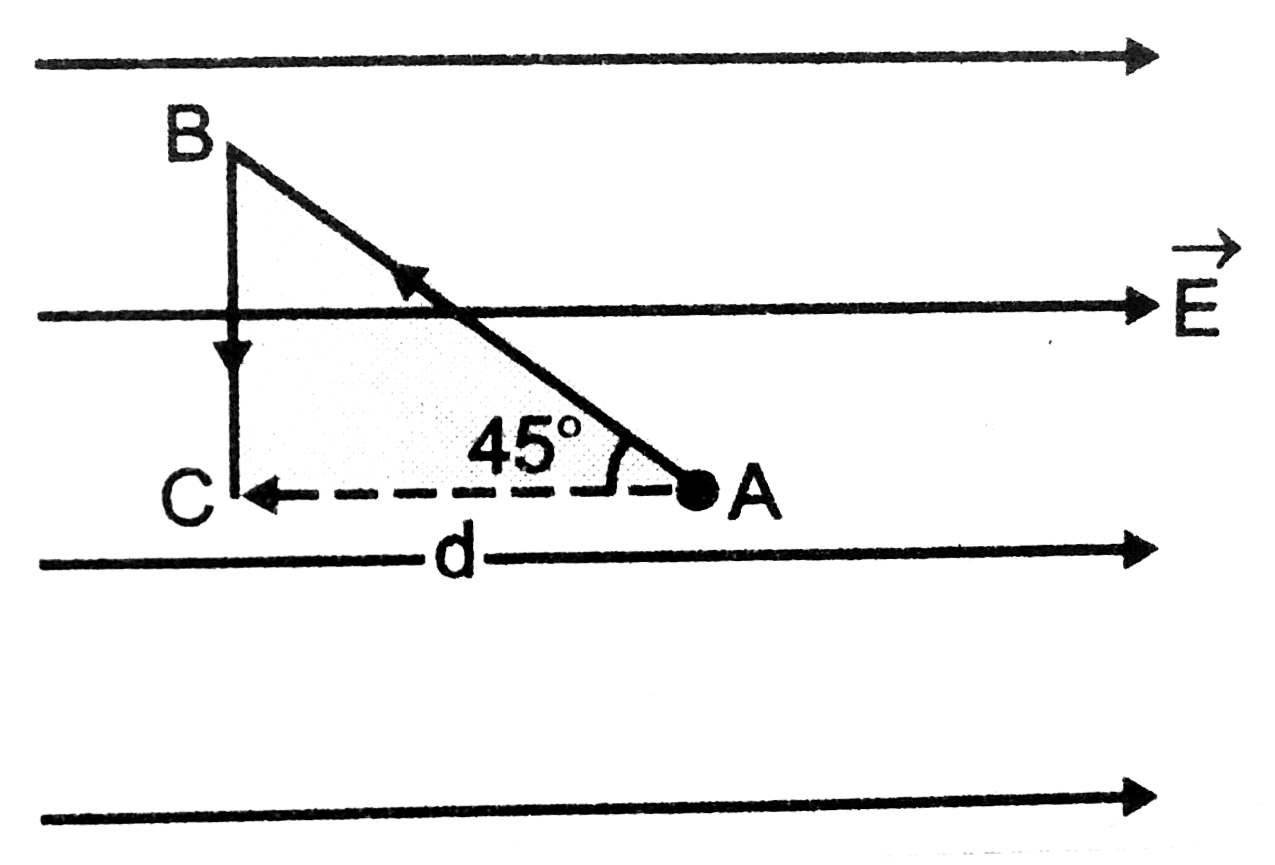
As is clear from Fig. −−→AB+−−→BC=−−→AC
As E=−dVdr=−(VC−VA)d=VA−VCd
∴VA−VC=E.d.
Similar Questions
A test charge q is moved without acceleration from A to C along the path from A to B and then from B to C in electric field E as shown in Fig. (i) Calculate the potential difference between A and C (ii) At what point [of A and C] is the electric potential more and why?
 View Solution
View SolutionA test charge q is moved without acceleration from A to C along the path form A to B and then from B to C in electric field E as shown in the figure.
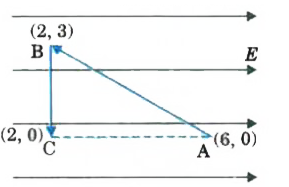
(i) Calculate the potential difference between A and C.
(ii) At which point (of the two) is the electric potential more and why?View Solution
Knowledge Check
- Question 1 - Select One
Passage II
We have two parallel plate capacitors P and Q having same capacitance C0. P is connected to a battery of potential difference V and it remains connected to the battery even after the charging is over. Q is also connected to a battery of the same potential difference V but after the charging gets over, it is disconnected from the battery.
Answer the following questions:
Potential difference between the plates of P, when a dielectric slab is inserted in between the platesAincreasesBdecreasesCremains sameDfirst increases and after some time becomes same as before
A test charge 'q' is moved without acceleration from A to C along the path from A to B and then from B to C in electric field E as shows in the figure. (i) Calculate the potential difference between A and C. (ii) At which point (of the two) is the electric potential more and why ?
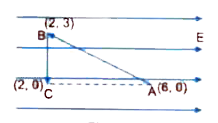 View Solution
View SolutionA car moves from O to D along the path OABCD shown in fig.
What is distance travelled and net displacement.View SolutionA test charge q is made to move in the electric field of a point charge +Q along a closed path as shown in figure. What is the work done ?
 View Solution
View SolutionTwo point charge q1=−10×10−6C and q2=15×10−6 are 40 cm apart as shown in figure. Find the potential difference between the point P and Q.
 View Solution
View SolutionA test charge q is taken from point A to B in electrostatic field of other charge Q as shown in figure. The reletion between potetial energy and potential ( between points A and B) is
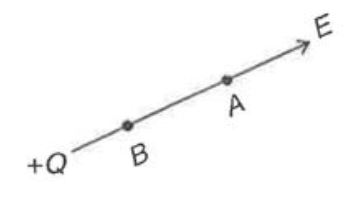 View Solution
View SolutionThe work done in moving a charge of 20 C from A to B over a distance of 0.2 m is 2 J. The potential difference across A and B is _______.
View SolutionA charge q=+1μC is held at 0 between two points A and B such that AO=2mandBO=1m Calculate the value of potential differences (VA−VB). What will be the value of potential differences (VA−VB) if position of B is charged as shown in Fig ?
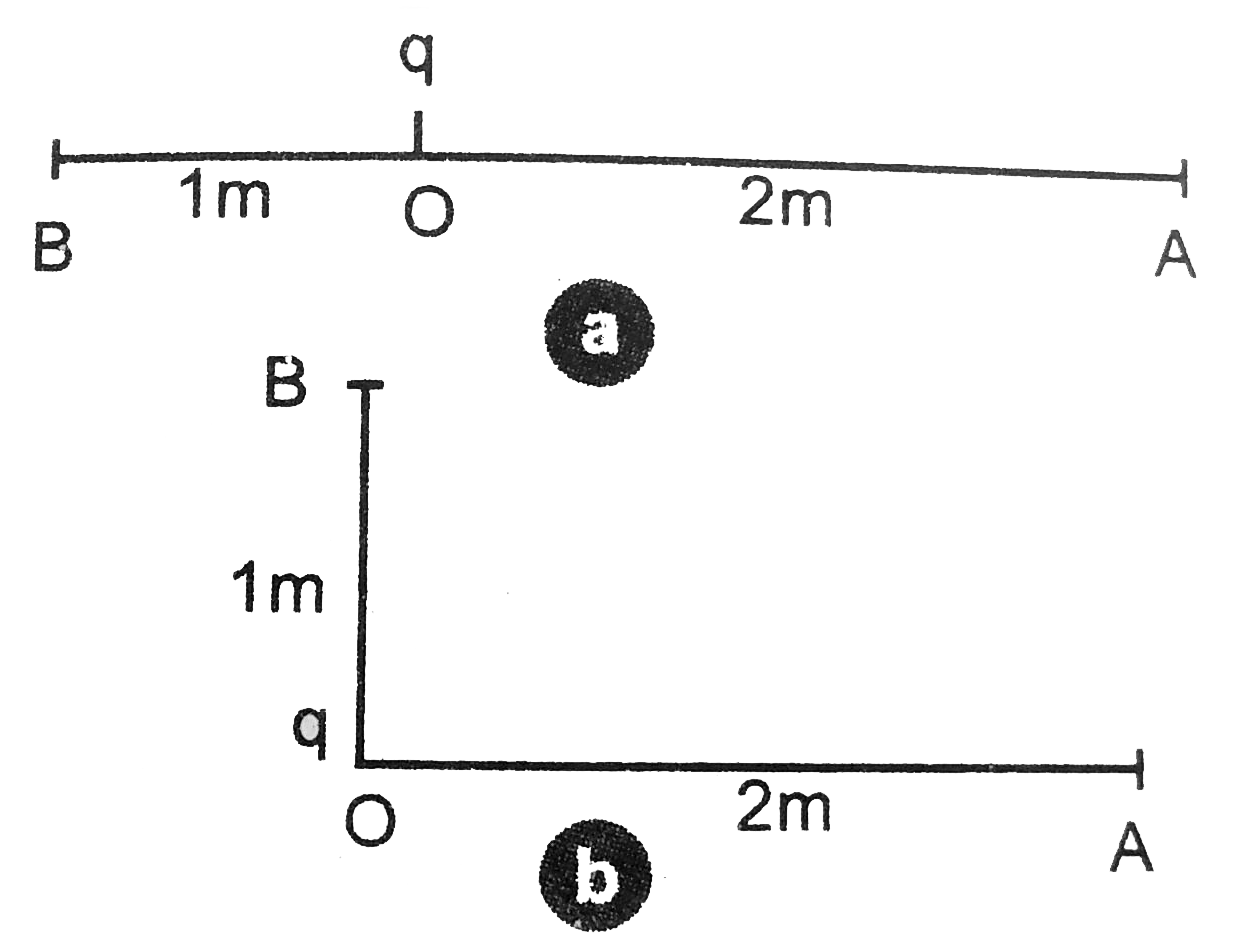 View Solution
View Solution

